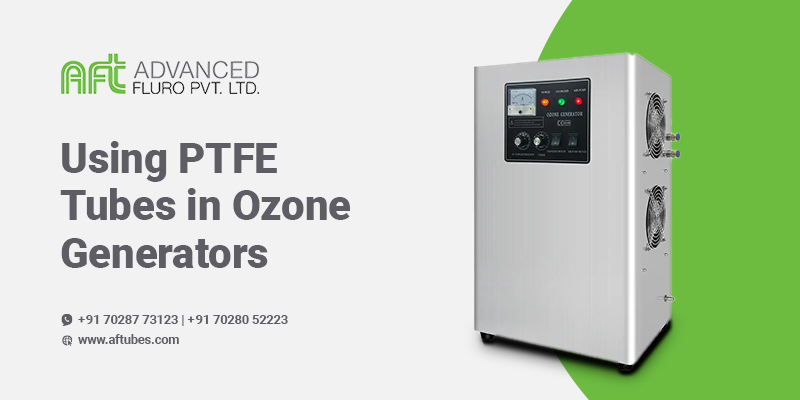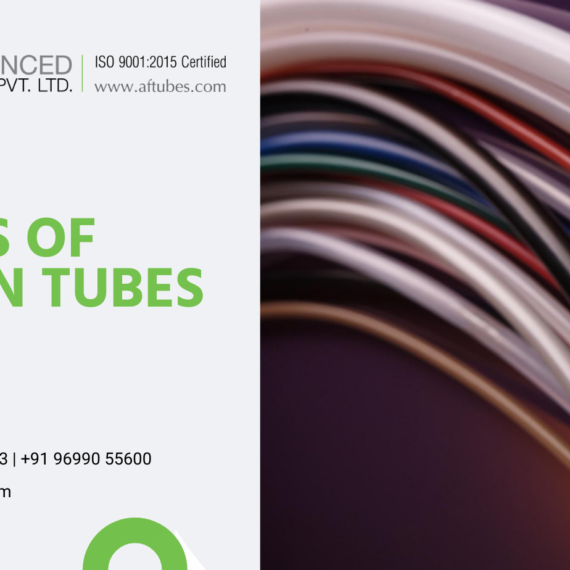Why are PTFE Tubes Used in Ozone Generators? And What is their Functionality?
Polytetrafluoroethylene is more commonly known as PTFE tubes or Teflon tubes. It has progressed gradually from a specialized product used only in high-value industry applications to a ubiquitous product in many applications.
What to Know About PTFE Tubes Used in Ozone Generators
PTFE tubes have several characteristics that make them perfect for many applications. It is flexible tube and can withstand severe chemicals.
PTFE Tube
PTFE Tubing (Polytetrafluoroethylene tubing) is a semi-transparent, non-corrosive, non-toxic polymer with unparalleled temperature tolerance and a amazingly smooth surface. PTFE tubes are utilized in applications that demand protection against high voltage levels, chemical agents, and extreme heat. PTFE has an extraordinarily low coefficient of friction, making it among the “smoothest” materials known. It has superior electrical characteristics and low permeability. The most common uses for PTFE tubing are laboratories and applications needing excellent resistance and cleanliness. Distinct types of PTFE tube sizes are available from 0.8 mm to 25 mm ID.

Useful Properties of PTFE Tubes
PTFE tubes are used in various industries, including automobiles, chemicals, electrical, and healthcare. Following are the critical properties of PTFE tubing that make it as convenient as they come.
- Heat Resistance
PTFE tubes can easily withhold any temperature between –260°C and +260°C degrees. Its melting point is 327°C, but it can resist temperature upto 250 deg Celsius.
- Dielectric Strength
You can use PTFE for applications with a >15 kV/mm working voltage range. They are popularly used for insulating electric cables.
- Low Friction
It contains identical static and dynamic coefficients with a rate of 0.1, making them extremely slippery.
- Corrosion Resistance
There is absolutely zero water absorption, so PTFE tubes stay non-reactive with most chemicals. Molten alkali metals, fluorine, and chlorine trifluoride at elevated temperatures are the only things that can affect PTFE tubes.
Why PTFE Tubes are Used in Ozone Generators
Ozone generators create ozone to purify the air from smoke odors in unoccupied spaces. The only materials used in any ozone operation demonstrate no resistance or reaction to ozone oxidation. When incorporating the ozone into a new application, one of the most typical concerns is how the ozone may affect the materials already in place.
PTFE tubing is a tremendous ozone-safe material that is flexible and resistant to oxidizing chemicals. It is ideal for delivering ozone because it is impervious to alcohols, acids, bases, and chlorinated solvents. Teflon can withstand temperatures ranging from -70 Deg Celsius to +250 deg Celsius. PTFE Tube exhibits high resistance to chemicals, solvents and gases. PTFE tube has excellent resistance to ozone gas. That is why tube PTFE or Teflon is the most selected because of its high ozone resistance.
The above characteristics are the standard aspects of PTFE tubing. These qualities of PTFE drive most of the demand and are why they are perfectly suited to be used in Ozone generators.
FAQs
How to cut PTFE tubes?
A standard plastic tube cutter can be used to cut PTFE Tubes. These cutters are available off the shelf online or offline. The tube cutters ensure a straight cut which eliminates possibility of leakage from end fittings.
Does the PTFE tube melt?
PTFE tube can withstand any temperature from –70°C and 260°C. But they only start melting at 327° Celsius.









